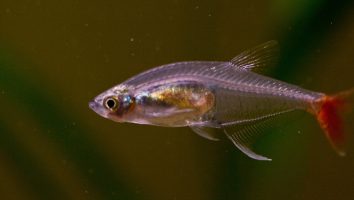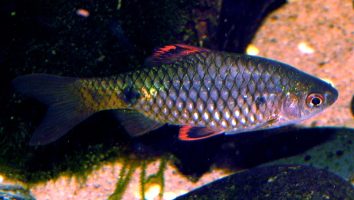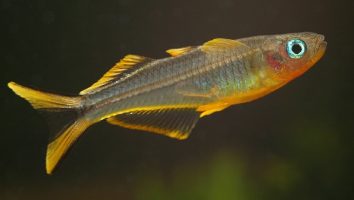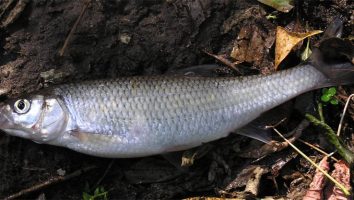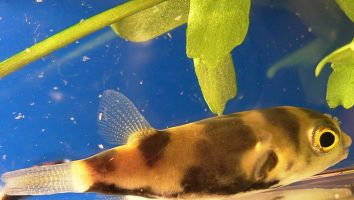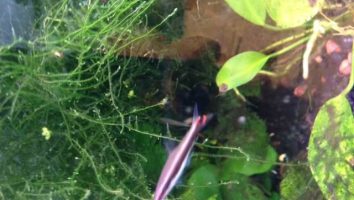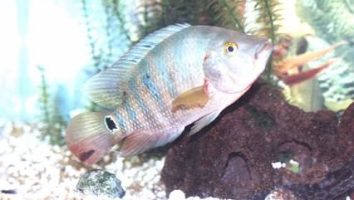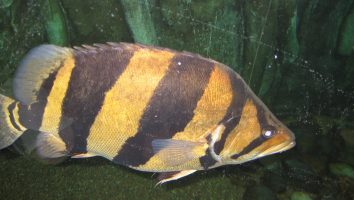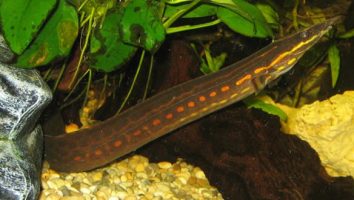Guppies are one of the most popular freshwater fish for beginners and experienced fishkeepers alike.
They’re easy to care for, come in a wide variety of colors and patterns, and are livebearers (meaning they give birth to live young).
But even though they’re easy to care for, there are still a few things you need to know to ensure your guppies are happy and healthy.
This guide will teach you everything you need to know about guppy care, including diet, tank mates, lifespan, and more.
Table of contents
Species overview
Guppies (Poecilia reticulata) are found throughout the Caribbean and parts of South America. They prefer slow-moving water with lots of vegetation and hiding spots.
In the wild, guppies eat a variety of small insects and crustaceans. In the aquarium, they can be fed a diet of pellets or flakes, but should also be given live or frozen foods regularly.
Guppies are very popular aquarium fish, and have been for many years. They are easy to care for and breed, and their bright colors make them a great addition to any tank.
Appearance
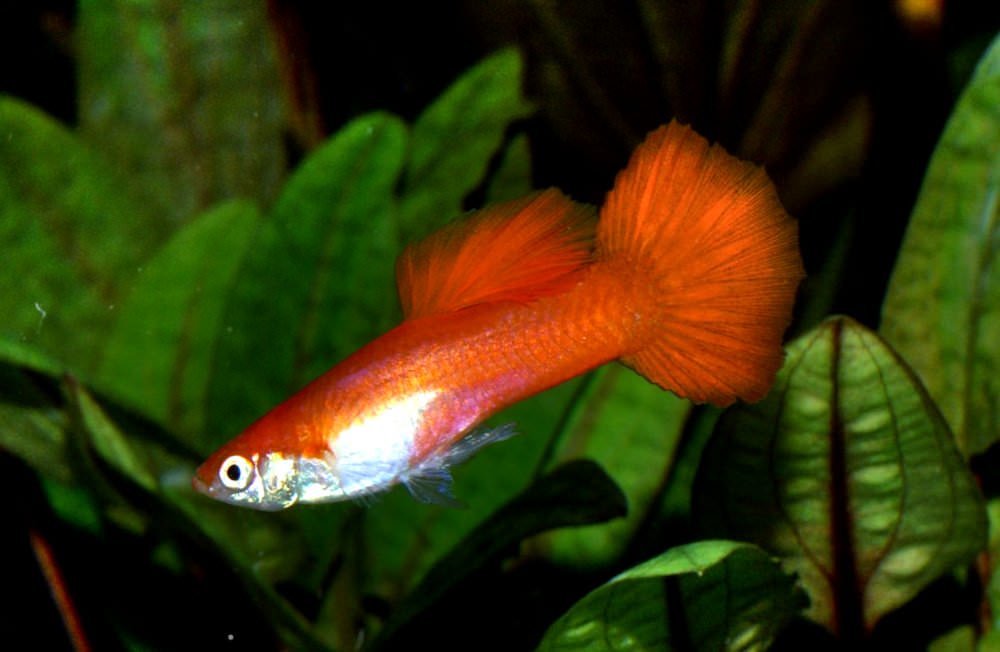
The guppy is one of the most popular freshwater fish in the world and it’s easy to see why. These little fish are very colorful and can brighten up any tank.
Guppies come in a wide range of colors and patterns. The most common coloration is a solid orange, yellow, or red body with black spots. However, you can also find them in solid colors like blue or green. They can also have stripes or other patterns.
Male guppies are usually more colorful than females. This is a way for them to stand out and attract mates.
Guppies have a fairly standard fish shape. They’re long and thin with a slightly rounded belly. They have a small dorsal fin and a forked caudal fin.
Their pectoral and ventral fins are small but distinctive. Guppies are known for having long tails that stream behind them when they swim.
Lifespan
Guppies have a lifespan of 2 to 3 years. However, there are reports of guppies living up to 5 years in optimal conditions.
The male guppy is the more colorful of the two sexes and usually has a lifespan that’s about 6 months shorter than the female.
The biggest factor impacting a guppy’s lifespan is the quality of water they live in. Ammonia, nitrites, and nitrates can all shorten a guppy’s life significantly.
Size
Male guppies can grow up to 2.5 inches, while females usually only grow to be 2 inches.
Tank
Tank Size
The minimum tank size for keeping guppies is 10 gallons. If you want to keep a school of 5 or more guppies we recommend at least a 20 gallon tank.
Remember, the more fish you have the more waste they produce and the more filtration you’ll need.
Water Parameters
Guppies are one of the most popular freshwater fish in the world, and for good reason. They’re beautiful, easy to care for, and fun to watch.
Guppies are also one of the most adaptable fish you can keep. They can tolerate a wide range of water conditions, making them ideal for both beginners and experienced aquarists alike.
Of course, that doesn’t mean you can just throw them in any old tank and call it a day. They still need proper care and attention, including stable water parameters.
Here are a few guidelines to help you create a healthy environment for your guppies.
- Water Temperature: 72 to 82 degrees Fahrenheit
- pH Levels: 7.0 to 8.5
- Water Hardness: 5 to 30 dGH
- Alkalinity Levels: 2 to 12 dKH
What To Put In Their Tank
Guppies are one of the most popular freshwater fish for a reason: they’re easy to care for and look great in any type of aquarium.
That being said, there are still a few things you should keep in mind when setting up their tank.
For starters, we recommend using a substrate that’s on the darker side. This will help bring out the colors of your fish.
Gravel or sand will work just fine. If you want to go with something a little different, try using black aquarium soil.
As for plants, Guppies are not known to be plant eaters. This means you can pretty much use whatever you want.
We recommend using live plants if possible. Not only do they look better, but they also help with water quality. Some good options include Hornwort, Java Fern, and Anubias.
If you can’t get your hands on live plants, or if you just don’t want to use them, then you can go with fake plants instead. Just make sure they’re not made of anything that can break down in the water (like plastic).
As for other decorations, it’s really up to you. Guppies aren’t picky and will pretty much appreciate anything you put in their tank.
Common Diseases
Guppies are one of the most popular freshwater fish for beginner aquarium hobbyists. They’re relatively easy to care for and don’t require a lot of maintenance.
However, they’re not invincible. Just like any other fish, guppies can get sick if they’re not properly cared for.
One of the most common diseases that guppies suffer from is ich. This is a parasitic infection that manifests itself as white spots on the body of the fish.
If left untreated, ich can be fatal. However, it’s relatively easy to treat with the proper medication.
Another common disease that guppies suffer from is tail rot. This is usually the result of poor water quality and can lead to the death of the fish if not treated.
Tail rot manifests itself as, you guessed it, rotting of the tail. The tail will become discolored and eventually fall off if the disease is left untreated.
Once again, this is a disease that is easily treated with the proper medication.
As with any other fish, the best way to keep your guppy healthy is to maintain a clean and stable environment. This will help to prevent the spread of disease and will also make your fish less stressed (which makes them less likely to get sick).
Behavior & Temperament
Guppies are social fish that do best in groups. They are known to be friendly and outgoing, and they enjoy interacting with both their own species and others.
Guppies are also known to be very active fish. They are constantly swimming around and exploring their surroundings. This can make them fun to watch, but it also means they need a lot of space. A small tank will not be suitable for a group of guppies.
When it comes to temperament, guppies are generally peaceful fish. However, there is some aggression within the species. Male guppies are known to be territorial and can be aggressive towards each other. This is usually only a problem if there are not enough hiding places in the tank.
Overall, guppies are fun and active fish that make a great addition to any community tank.
Tank Mates
When it comes to guppies, you have a few different options in terms of tank mates. These fish are social creatures that do well in groups.
That being said, they can also hold their own against other fish species.
Guppies are also live bearers. This means that they can have fry (baby fish) in the tank. As a result, it’s important to choose tank mates that won’t see the fry as a food source.
Here are some compatible guppy tank mates:
- Platies
- Mollies
- Swordtails
- Endler’s Live Bearers
- Tetras
- Danios
- Corydoras Catfish
Breeding
Guppies are one of the most popular freshwater fish for beginner aquarists. They’re relatively easy to care for and their bright colors add a splash of personality to any tank.
Guppies are also easy to breed. In fact, they’re known as “livebearers” because they give birth to live young rather than laying eggs.
The key to successful guppy breeding is to start with a healthy, well-fed female and a healthy, well-fed male. Guppies reach sexual maturity quickly, so you may not have to wait long for your fish to be ready to breed.
When the female is ready to breed, she will have a gravid spot – a dark area near her tail. This is where the fry will develop.
Once the female is gravid, she will need a place to give birth. A “birthing tank” is a great option. This is simply a small tank (5 gallons or less) that is set up with the same water conditions as the main tank.
Some breeders also add a mesh netting to the top of the birthing tank to prevent the fry from escaping.
When the female is ready to give birth, she will do so in the birthing tank (or wherever she feels most comfortable). The fry will be born alive and fully-formed.
Once the fry are born, they are on their own. The adults should be removed from the birthing tank to prevent them from eating the fry.
The fry will need to be fed small live foods, such as brine shrimp or microworms. They can also be fed commercially-prepared fry foods.
As they grow, the fry will need to be moved to larger tanks. It is important to do this slowly, over the course of a few days, to ensure that the fry don’t experience too much stress.
Conclusion
Overall, we think guppies make great additions to any freshwater tank. They’re relatively easy to care for, they’re very colorful, and they’re generally peaceful.
Of course, there are a few things to keep in mind when keeping guppies, but we think that’s true of any fish. As long as you do your research and are prepared to care for them properly, we think you’ll be very happy with your guppies!

